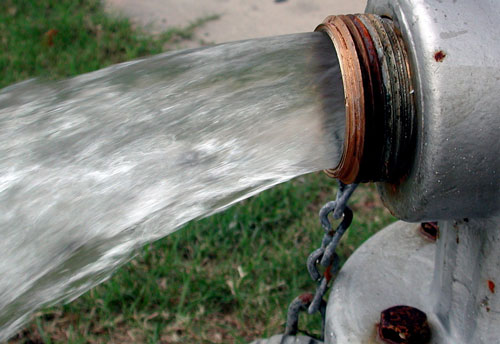As I previously warned you, this week (April 29 – May 3) is the annual flushing of the hydrants in Southborough.
It will take nearly all week for the DPW to flush all the hydrants in town, and when they’re doing the ones in your neck of the woods, you may notice your tap water running brown.
While DPW Superintendent Karen Galligan has told us the brown water is perfectly safe to drink, I think it’s also safe to say most of us would rather not try it!
It’s okay to run cold water while flushing is taking place near you, but you should avoid running hot water because doing so might pull sediment into your hot water tank. You should also avoid doing laundry because it will stain your clothes.

Flushing usually occurs between 8:00 am – 2:30/3:00 pm.
In the past, the DPW described the general areas of town scheduled for certain days. This year to help residents plan even better, the DPW issued a map.
To see which day is most likely to impact your neighborhood, click on the image right.
Here’s some information Galligan provided in past years on why hydrant flushing is important and what to do if your water runs brown:
Even though the water system is designed so that water has several routes to reach any location, generally speaking, most mains tend to flow in one direction. Water travels slowly through the water mains and sediment settles at the bottom of the main. The flushing program reverses the flow of the water in the main. The reverse in flow direction flushes the sediment from the system through the hydrants. We flush the hydrant until the water runs clear.
When a resident uses their water while the main on their street is being flushed they bring the discolored water into their home. The discoloration is just the sediment and it is safe to drink, it just isn’t too appealing (the sediment does have bits of rust, in it). The best way to purge a service of the discolored water is to run cold water until the water runs clear. I suggest using the bathtub faucet because it flows more water. The water should run clear in 10-20 minutes, unless your service is very long, then it may take longer.
If you have aerators on your faucets you might want to rinse them out in case the screen caught any debris. If your hot water is discolored, it means that you pulled the sediment into the water tank. You should flush out your service with the cold water faucets and then, when you are sure you have purged the pipes in your home and everything is running clear, you should run your hot water and try to clear that up.
(Photo posted to flickr by Editor B)



…Isn’t that how the saying goes?
TIP: If you know the hydrants have been flushed in your area, find the first plumbing line in your home that goes to a fixture – sink, outside faucet, etc. Turn this one on and let the water flow through it til it becomes clear. This will prevent the rusty hydrant flushing water form entering all of the water lines in your home. If you do not follow this procedure, you’ll end up with rusty water going into any water line that draws water – sink, toilet, tub, shower, etc. and each line will need to be flushed. Then you can flush out all of your toilet tanks and clean all of your toilets.
Perhaps Ms. Galligan would care to create a Youtube video in which she draws the rusty water from a Southborough faucet, then proceeds to drink it?
Reverend Jones said, “Drink the Kool-aid!”.
To be fair, I don’t think she was really recommending drinking it. I think it was meant to say – don’t panic if there’s some discoloration, it’s just sediment, here’s what to do…